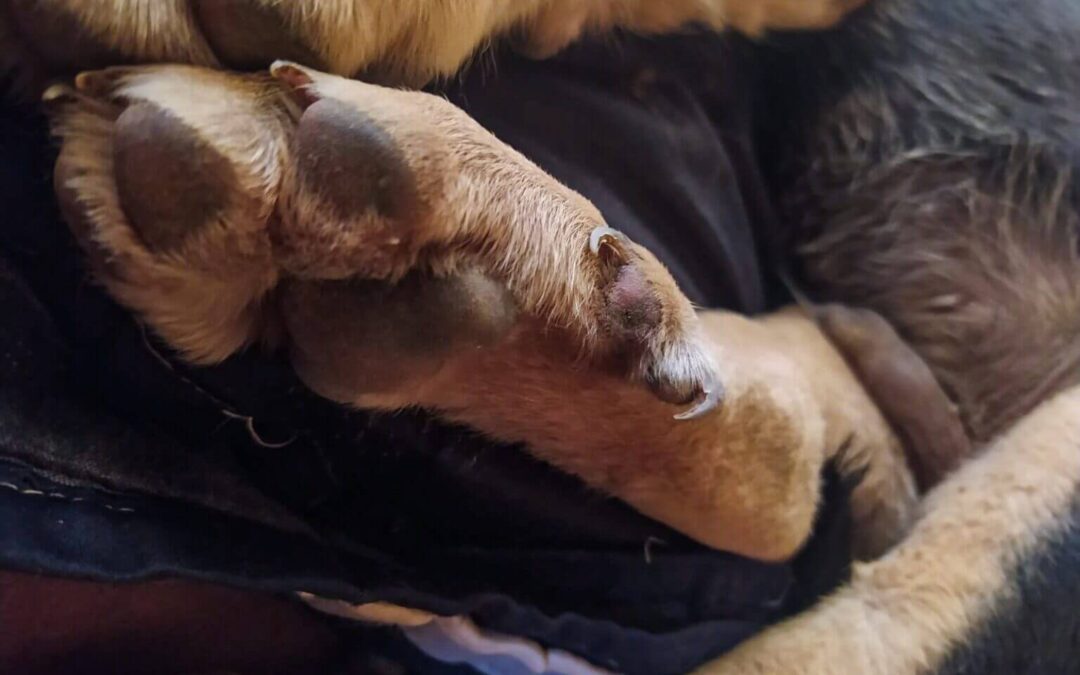Most dogs have 5 toes on the front legs and 4 toes on the back. However, there are certain breeds (especially giant dog breeds) such as the Pyrenean Mastiff, the Beauceron or the Saint Bernard, which may have an extra finger on the dewclaw. These small structures that are not attached to the paw or bone of the dog, are mainly due to genetic traits of the animal. It is not a problem or a malformation, in fact, although it is more typical in large dogs, this characteristic can appear in any dog of any size.
It is believed that this claw has lost its usefulness over time, but originally it could serve to give them greater support, especially in the mountains, where dogs needed a greater grip. In addition, it also contributes to balance and stability when the animal is in motion, especially on uneven terrains, when coming out of water or on slippery surfaces. At the same time, the dewclaw also contributes to grooming, especially when dogs clean their heads and faces.
The dewclaw does not have negative effects on the dog, many dogs keep it throughout their lives, and it does not represent difficulties, except in specific cases. As it is an “extra” finger that isn’t attached to the dog’s leg, it can lead to certain problems. It is easier for it to tear off if it is caught in a fence or any surface, causing a lot of pain to the animal. Likewise, since the dewclaw does not touch the ground like the rest of the fingers, the nail is not filed and can end up nailed, ingrown, or even trapped, causing infections and pain to the animal.
If the dog has presented one of the previous problems, you must go to a veterinarian, since they will always be the ones to recommend removing the dewclaw or not. It is advisable to go to the vet when the extra spur is detected in puppies, since the younger the animal, the easier the intervention will be and the faster the recovery. If the dog is older and the dewclaw has never represented a problem, there is no reason to remove it, as long as the nail is taken good care of so that it does not grow more than normal and causing accidents to the dog’s legs.
